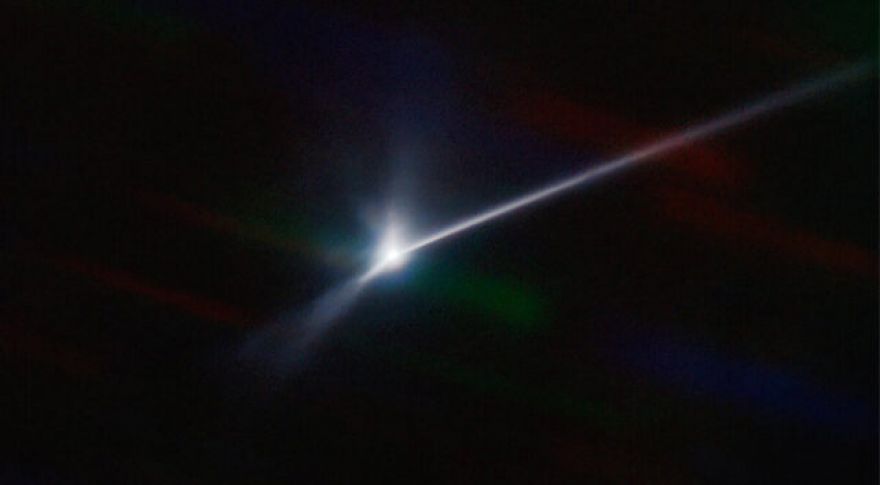
Asteroid Impacted by DART Now Has 6,000-Mile Tail
NASA made history last month when it known as Dimorphos. DART, or the Double Asteroid Redirection Test, was the first-ever demonstration of planetary defense technology. With the impact over, scientists around the world have turned their telescopes toward the space rock to survey the aftermath. The latest observations show Dimorphos has grown an enormous comet-like tail of debris.
DART was not a particularly large spacecraft. It was about the size of a vending machine; little more than a camera with an ion engine attached. Its goal was simply to collide with Dimorphos, which is a small 170-meter asteroid orbiting a larger space rock called Didymos in a binary system.
The image above comes from the SOAR telescope in Chile, showing a . This is all material that was blown off the surface of Dimorphos by the DART impact. In a separate observation, the CFH telescope spotted the tail when it was a bit shorter in the days immediately following the collision. The material is being pushed away from the asteroids by the solar wind, making the object look almost like a comet.
Our last post was Monday's observations of the debris from the impact on Didymos. Courtesy of 's Rob Weryk, this gif is last night's observations with MegaCam. Rob and Richard Wainscoat from plan continued observations of the asteroid.
— CFHT (@CFHTelescope)
In just the last few years, our assumptions about the nature of asteroids have been challenged. NASA’s OSIRIS-REx mission found the asteroid Bennu to be much craggier than expected, and there’s evidence it may be , like a giant gravel pile. Observations like the ones from SOAR and CFHT may help characterize the debris. Did DART only blast surface dust away, or did Dimorphos lose larger chunks of regolith? This is key to the goal of understanding and stopping dangerous space rocks in the future.
The European Space Agency (ESA) will send a mission called Hera to investigate Dimorphos up close after the dust settles. It will launch in October 2024 and is expected to rendezvous with Dimorphos late in 2026. This will be the first time two different missions have traveled to the same asteroid, making Dimorphos the most studied asteroid in history. Assuming, of course, it’s still in one piece. Some early analysis suggested it might be after the impact.
Now read: